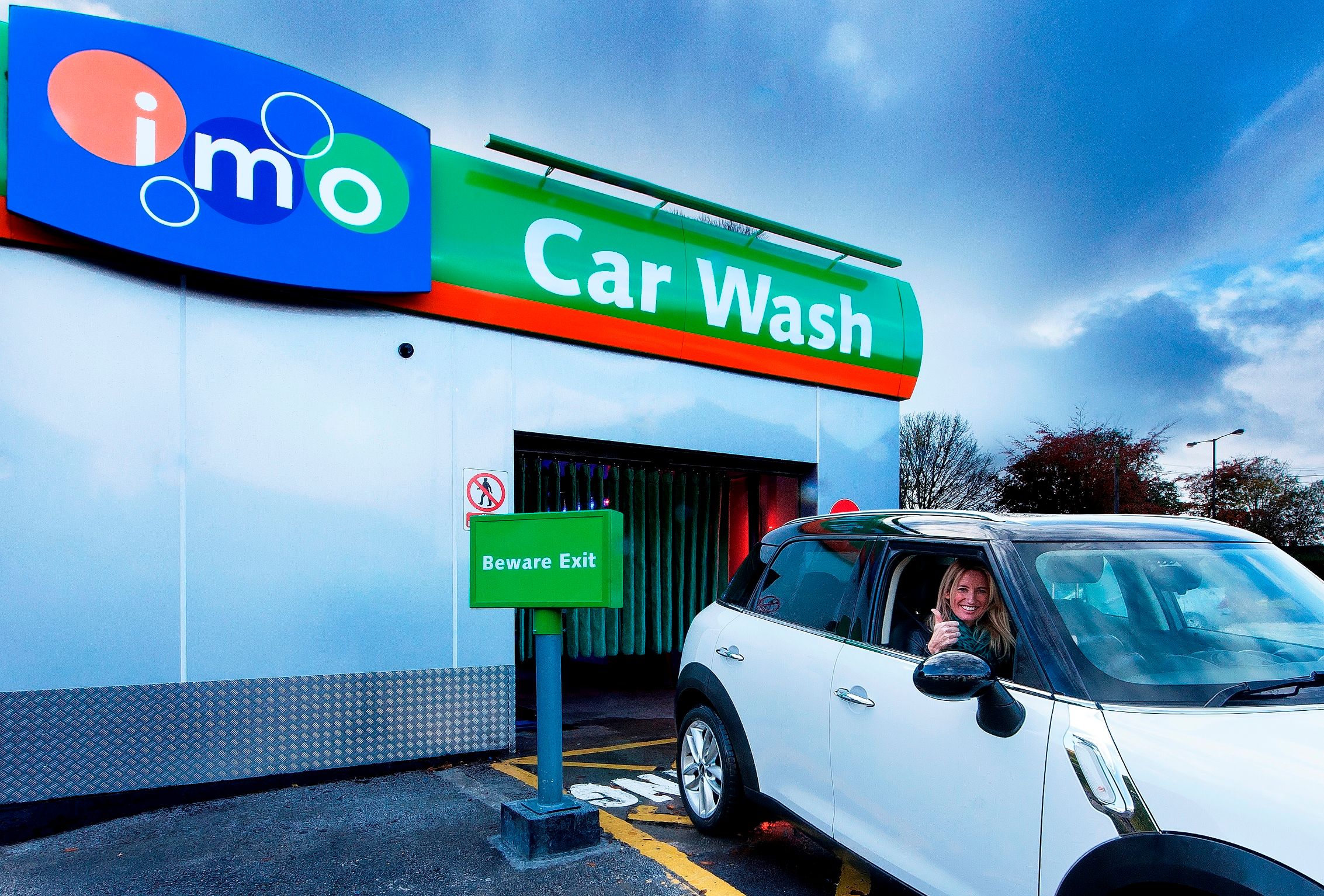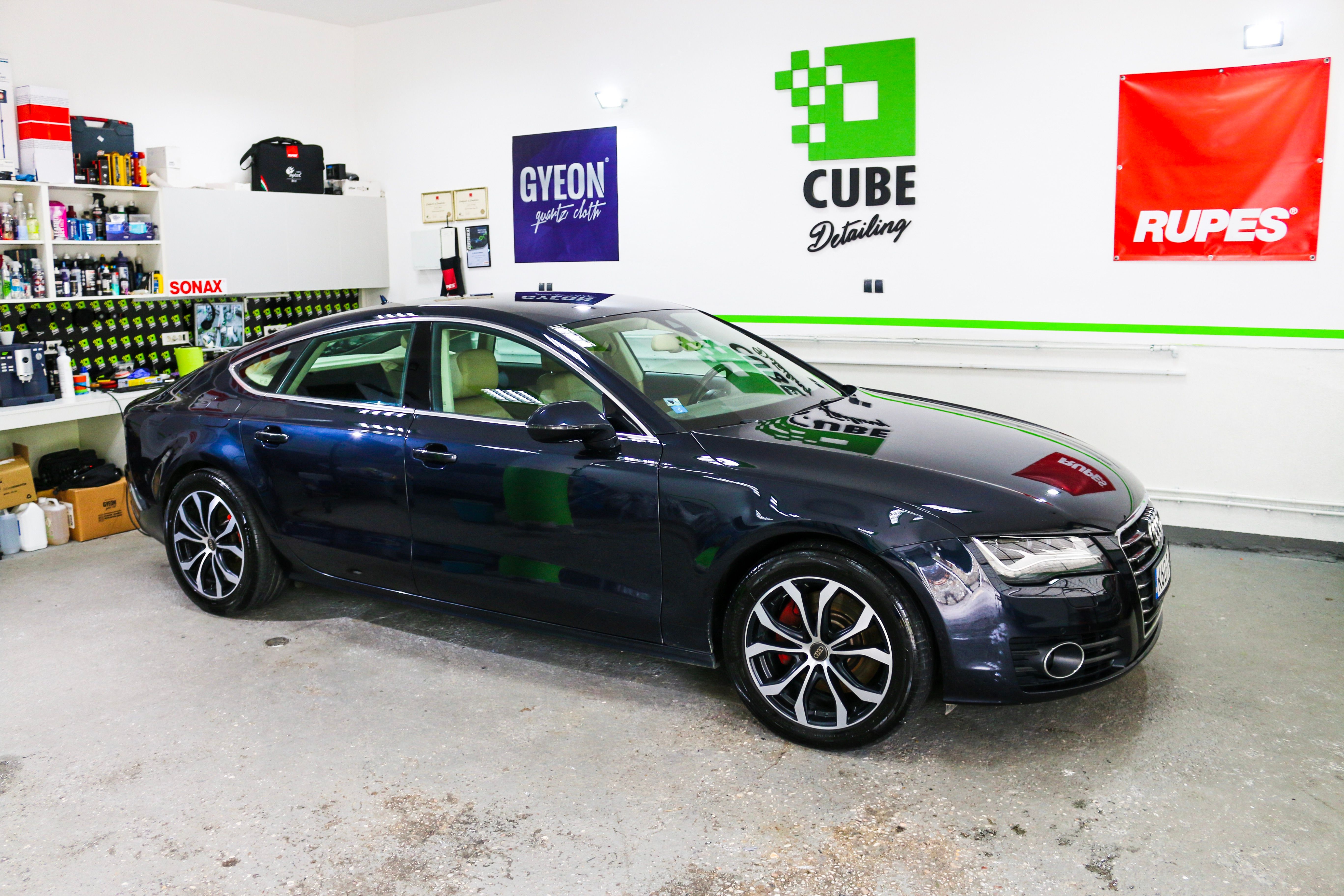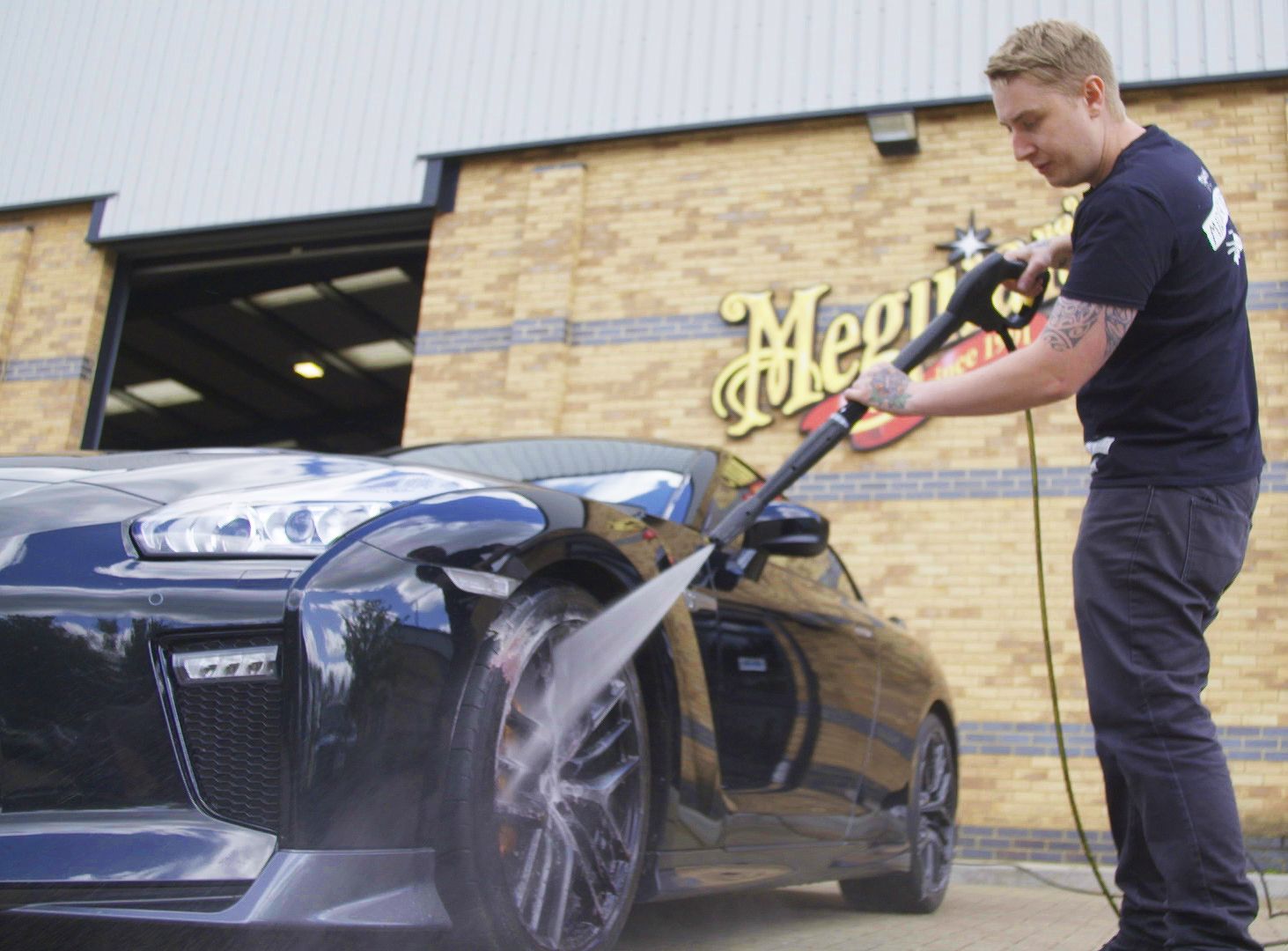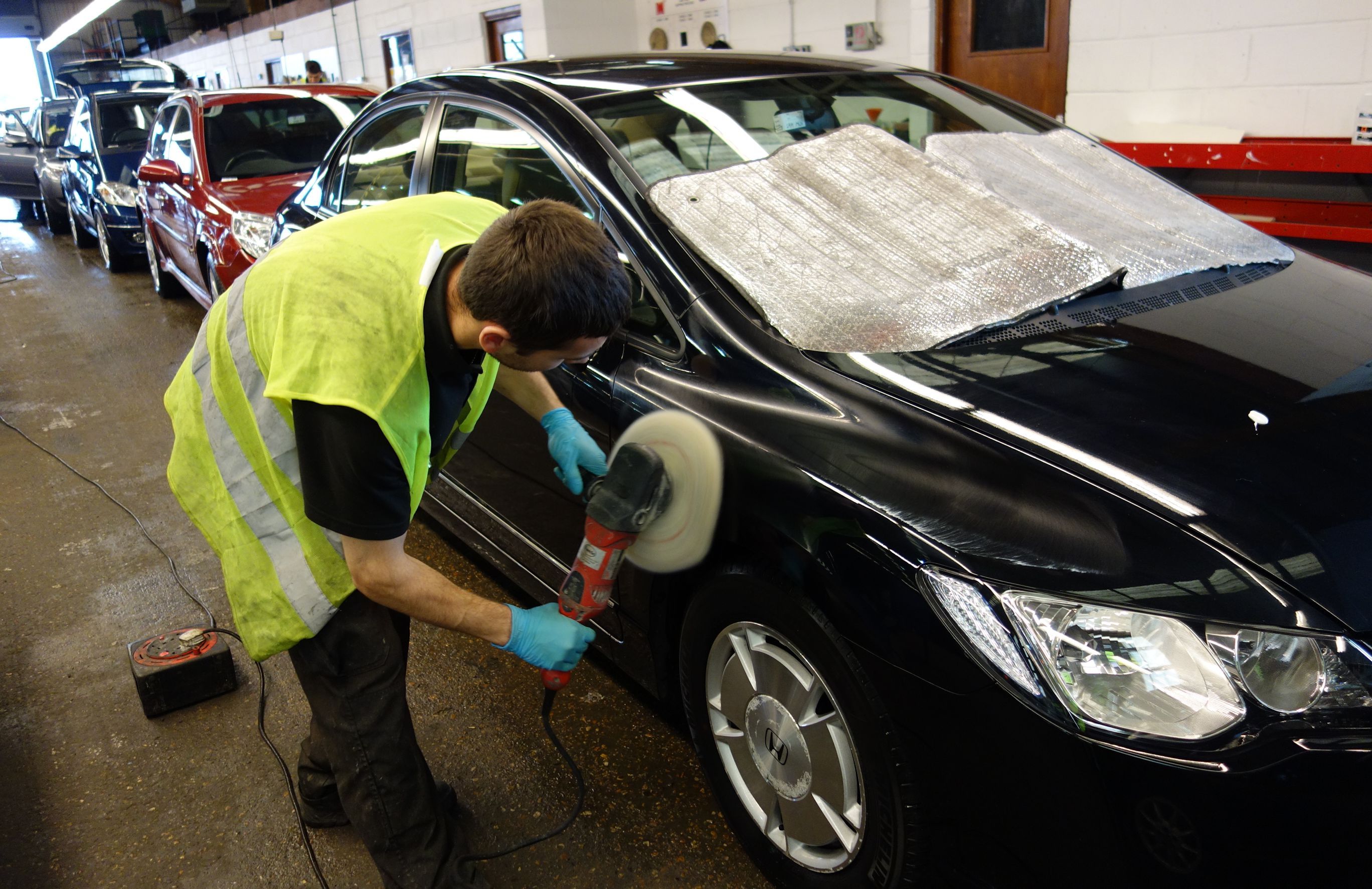Automatic car washes seem to be a fantastic, convenient, and quick alternative to a traditional hand car wash. However, the experience has shown that using an automatic car wash can do more harm than good. Abrasive materials can scathe the paint and the clear coat, while brushes usually make so-called spider web marks on the exterior, reduce the shine, and blemish the exterior of the car.
Brushless car wash systems promise to reduce the possibility of the damage, offer eco-friendly washing solutions, and deliver a better product in the end. However, over time they have also manifested some significant drawbacks and disadvantages compared to a classic hand-wash and, in some instances, brushless car washes can do even more damage than the standard automatic car wash solution.
You will learn here all the pros and cons of the automatic car wash systems and brushless car wash systems. Furthermore, you will learn how to prepare your car before an automatic car wash and reduce the possibility of any damage.
Automatic car wash pros
-* Uses less water compared to hand-wash
-* Does not require any physical effort
-* Quicker compared to a hand-wash
-* Cheaper compared to hand-wash
-* Relatively detailed undercarriage cleaning
Automatic car wash cons
-* Higher risk of paint (or other) damage
-* Possible use of recycled water (usually filled with small contaminants)
-* Use of abrasive, and powerful chemicals
-* Unmaintained, and filthy brushes
-* Not as detailed car wash as a hand wash
-* Water stains
-* Scratches
-* Scratches
-* Scratches
Brushless automatic car wash pros
-* Eco-friendly (brushless automated car wash use only 35 gallons of water compared to 150 gallons of water a nice hand-wash require)
-* Quick
-* It is not labor intensive
-* Probably better compared to the standard automatic car wash solution
-* Undercarriage cleaning
Brushless automatic car wash cons
-* Not as effective at removing larger and thicker debris compared to an automatic car wash or a hand-wash
-* Uses powerful chemicals that will likely shorten the lifespan of any waxes, sealants, and ceramic coatings on the vehicle
-* Potentially hazardous for the clear coat if used frequently
-* Possibly a bit more expensive compared with the standard automatic car wash
-* It is not uncommon to have dirt remain on the car after a brushless car wash (there is no way to achieve a 100 cleaning service without a powerful physical contact)
How To Reduce The Chance Of Damage In The Automatic Car Wash
Obviously, both automatic car wash techniques - brushless and standard automated car wash - have some pros and cons, but the biggest issue is the possibility of damaging the car. The automatic car wash with brushes and hard physical contact between the vehicle and the brushes (however soft they are), increases the likelihood of damage.
The most radical cases may produce clearly visible physical damage such as broken radio antennas or even disfigured spoilers or bumpers. This damage isn't something that happens often, though. On the other hand, scratches on the paint job do happen frequently. The debris left on the brushes and soft cloth after numerous car wash procedures are likely to create so-called spider-web scratches on the clear coat. An issue that any owner of the black car knows about.
|
|
ids=844433,844434 |
no_overlay=false |
before_label=Before |
after_label=After> |
Furthermore, car wash attendees may damage your car by removing water with dirty rags or cloth. This is especially likely during busy hours when car wash employees do not have the time or the will to change the cleaning cloth as often as needed.
In that case, it is better to drive away in a wet car than to let the attendees dry it with a questionably clean cloth.
Other damage prevention measures you can take include:
-* Spray cleaner treatment after the wash
-* Choose an automatic car wash that has the hardware to clean the undercarriage - this should keep the drainage holes unobstructed and prevent any accumulation of dirt, salt (during winter), and corrosive chemicals - a must for keeping the underbelly of the car in as good condition as possible
-* Put retractable antennas down, and fold the side mirrors (especially if they are loose)
-* Remove all the cargo from roof rack (if you have it)
-* Visually inspect brushes installed in the automatic car wash -if they are dirty, it is best to find another automatic car wash
-* Close all the windows, roof openings, and, raise the roof if you are in a freaking convertible (sorry, I just had to tell you, but I am sure you would figure it out yourself)
-* Do not, under any circumstance, visit and use automatic car wash if you have any water leaking issues on your car
With continuous use, the first victim of the automatic car wash is clear coat. Brushes, contaminated cloth and other hardware that comes in direct contact with the car leave little scratches that create a so-called spyder web effect. You can clearly see it on the left side of this photograph. On the right side of the photograph, you can see a professionally treated surface that has been brought to its original state.
Clear coat on your car should look like the coat on the right side of this photo, however, with each visit to the automatic car wash, the clear coat looks more and more as it is on the left side of it
How Do Brushless Automated Car Wash Services Damage a Car?
While brushless automated car wash centers offer somewhat less intrusive cleaning procedures without any physical touch between the car and any cleaning medium such as a brush or a cloth, they do use powerful chemicals and extreme water pressure to remove the dirt. Although scientifically unproven, customers who often use brushless car wash centers have complained about the reduction of shine their cars. Chemicals used during the cleaning procedure are considerably more abrasive compared to the shampoos used in hand-wash cleaning procedures and even in the automated car wash systems.
While this may or may not be an issue, I can make a particular point regarding the damage induced by the bombardment of the vehicle with the small particles that remained in the wash chamber from previously treated cars. This sounds a lot like a sandblasting, and in some sense, you can consider it as such. The water and air pressure involved usually surpass 120 bars. For example, standard automated car wash systems typically reach up to 80 bars of water pressure.
Couple such a powerful jet with the debris that remained after the previously treated car, and you can probably picture small projectiles that hit your vehicle at an alarming rate. Clear coat certainly can withstand this, but the car will lose its shine over time, especially if it is from Japan or Korea where the use of softer paints and clearcoats are common. It is the word on the street that the clear coat on Japanese and Korean cars are more sensitive, and cannot withstand as much punishment as clear coats on American or European cars! Take this with a grain of salt, as it is, as I've just said - just a word on the street!
Sure, well-maintained car wash systems do not affect the car as much.
Do you wonder how to spot well maintained touchless automated wash service centers? Check the cleanliness of the cleaning gadgetry. If it is clean, without grit, shingles, or dirt, you can be reasonably sure that the proprietor properly maintains the system.
In the end, I can say that touchless automated car wash services offer an interesting alternative to the standard automated car washes and hand wash services. However, its lack to completely remove the contaminants that, over time, accumulate on the surface of the vehicle, does raise a question about its usefulness. If you, like the most average car owners, aren't that concerned about all the intricacies of clear coat maintenance, I can only tell you that you continue using what you find the most convenient. For the sake of reason, avoid poorly maintained car wash services, and check how clean that cloth that attendees use to dry your car really is. Usually, however, a spray of hot air will remove all the water drops as the final step in the automated car wash regardless of its nature (touchless or with brushes). Also, if you need my thoughts on the matter - reason assures me that air and water from the touchless automated car wash are softer on the coat and paint of your car than brushes and cloth.
A word from a professional:
A professional detailer of Cube Detailing, Senad Sakota says:
"If you visit an automatic car wash with the brushes or soft cloth once or twice per year, it should not affect the clear coat on a car in any recognizable way. There is, of course, no way you can limit yourself as much. In that case, I have to tell you that it is impossible to completely protect the car from the damage car wash brushes and cloths (soft or hard) inflict on a clear coat. The dirt that accumulates on the brushes and cloth is hard to remove, which means that every time you get your car into an automatic car wash, you do expose your car's clear coat to dirt and debris contained on the cleaning gadgetry itself. The problem is evident even on the new brushes or soft cloths installed at automatic car wash services."




